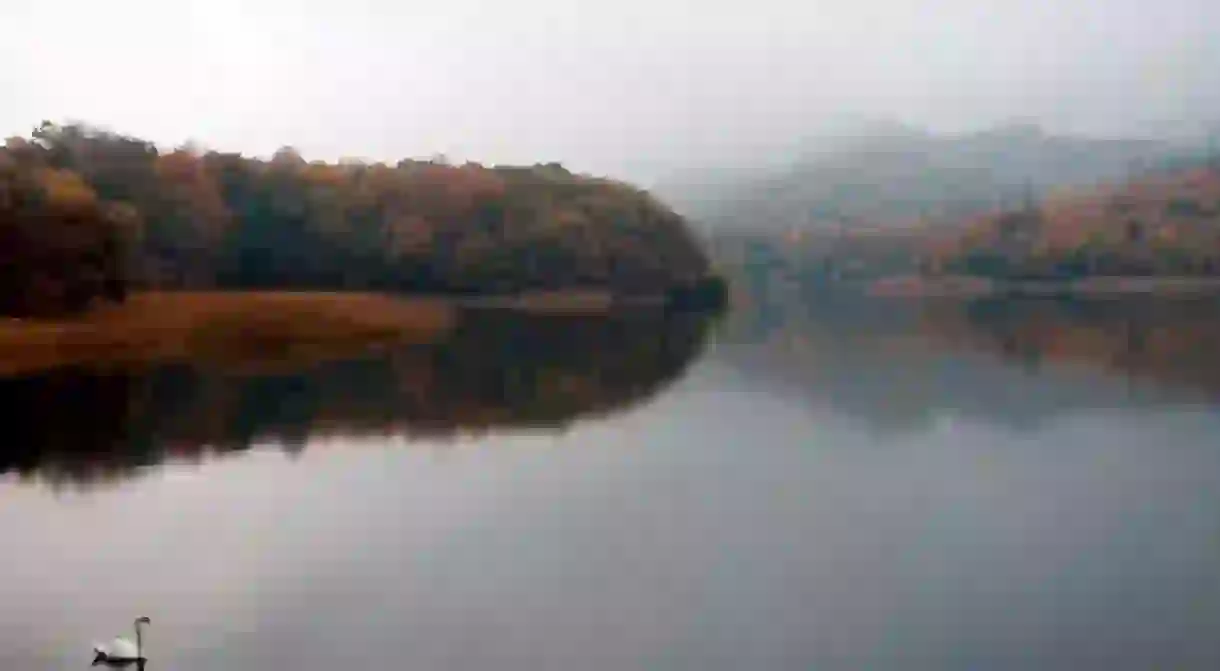The Most Beautiful Rivers and Lakes in Azerbaijan

Azerbaijan boasts more than 8000 rivers and 450 lakes. We’ve selected the most beautiful – those looking to experience the best of nature should visit one of the following rivers and lakes in Azerbaijan.
Lake Goygol
According to many, Lake Goygol is the most beautiful lake in Azerbaijan and a popular day trip from Ganja. Mountain peaks and thick forests hug the edge of the water giving it real elegance. A wide variety of fish live in the lake, which formed after an earthquake changed the regional geology in the 12th-century. Because of the current conflict with Armenia and Lake Goygol’s proximity to the border, only certain sections are open to the public.
Lake Sarysu
Lake Sarysu holds the title as Azerbaijan’s largest lake. Located in the Kur-Araz Lowlands and stretching a total length of 22 kilometres (13.7 miles), the freshwater lake offers both incredible views and a plethora of wildlife. Travelling here can be a challenge for even the most adventurous visitor, but the views and unspoilt terrain are worth the effort.
Lake Agh Gol
The second largest lake in Azerbaijan sits to the west of Lake Sarysu in the Agh Gol National Park. Connected by a small channel to its slightly larger brother, the freshwater provides a suitable environment for several species of migratory birds. Forested areas and wetlands surround the blue-green water creating highly photogenic scenery.
The Caspian Sea
The Caspian Sea deserves a special mention on this list as geologists call it the world’s largest lake. Azerbaijan has 500 kilometres (310 miles) of coastline sharing the water with Russia, Kazakhstan, Turkmenistan and Iran. Despite oil exploitation, the Caspian is a haven for wildlife from the endangered Caspian Seal to migratory birds such as swans, flamingos and various types of duck. Head along Azerbaijan’s coastline and pass through flat, arid plains, national parks and wetlands. For the best views from the capital, head along Baku Boulevard or ride the Funicular to Upland Park.
Mingachevir Reservoir
Look at a map and see a large body of water located near Ganja. Stretching for 70 kilometres (43.5 miles) with a maximum width of 18 kilometres (11.2 miles), a visitor might assume it’s a huge lake. After all, it dwarfs both Sarysu and Agh Gol, the largest and second largest lakes in Azerbaijan. But it’s not. The water in Mingachevir contains a vast reservoir and Azerbaijan’s most important hydroelectric station. Known by locals as ‘the sea’ and with small sections of ‘beach’ along the shores, Mingachevir Reservoir might be worth visiting for a non-touristy day trip in Central Azerbaijan.

Kura River
The Kura River begins in Eastern Turkey’s Lesser Caucasus before traversing through Georgia. Entering Azerbaijan from the north and passing through Mingachevir Reservoir, the meandering waterway eventually drains into the Caspian Sea. Not only is the Kura the longest river in Azerbaijan but at 1515 kilometres (941 miles) it holds the title as the biggest in Transcaucasia. Throughout history, the Kura provided a lifeline for several villages and communities for irrigation, especially during the long dry summers. Today, it’s the primary water source in Azerbaijan.
Araz River
With a length of 1072 kilometres (666 miles), the Araz River ranks among the longest in the Caucasus. Formerly entering the Caspian Sea and now joining to the Kura, the Araz plays an integral role in regional history. Traders and armies used the river as a highway, and it later marked the territorial border between Russia and Persian. But most intriguing is the association with the biblical River Gihon first mentioned in Genesis. The rich biodiversity with almost 70,000 birds from more than 200 species live along the Araz’s shores and wetlands.

Samur River
Beginning in Dagestan among springs and glaciers in the Greater Caucasus Mountains, Samur flows south before discharging into the Caspian Sea. The river itself only has a small portion in Azerbaijan forming part of the east-west border with Russia for more than 30 kilometres (18.7 miles). Two tributaries stretch south into Azerbaijan providing water for the Samur-Absheron Channel used for irrigation. Visiting the river and enjoying the views is possible on a day trip from Quba.














